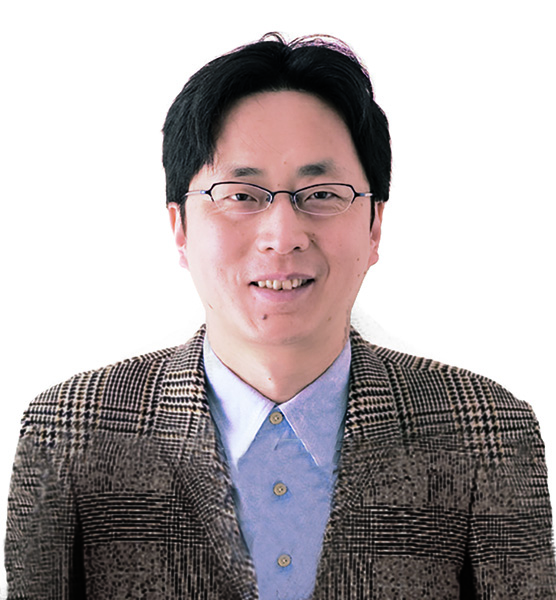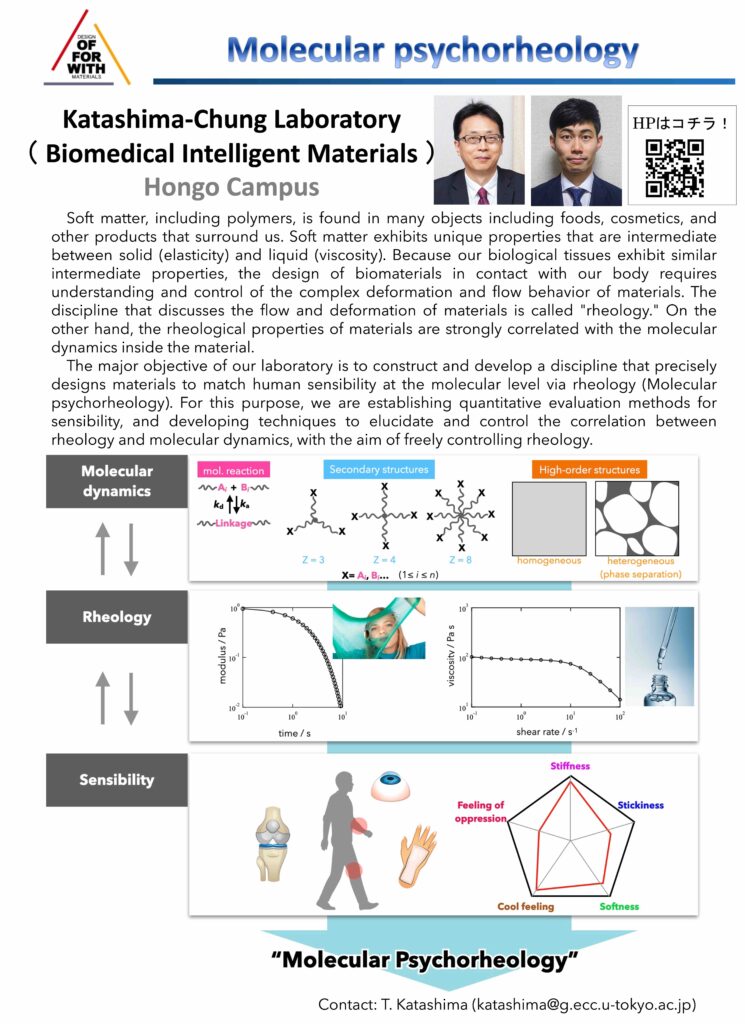Yuichi Tei / Ung-il ChungProfessor

- Telephone
- +81-3-5841-1427
- FAX
- +81-3-5841-1428
- tei[at]bioeng.t.u-tokyo.ac.jp tei[at]tetrapod.t.u-tokyo.ac.jp
* In your correspondence, please replace [at] with "@" in the above email address.
- Laboratory
- https://grn.tokyo
- Research Field
- structural biomaterials, bone and cartilage biology, bone and cartilage regenerative medicine
Research
With the society aging and birthrate declining, irreversible damages of skeletal tissues including bone and cartilage have become socioeconomically significant problems, and tissue engineering and regenerative medicine attract a great deal of attentions. Among the three pillars of tissue engineering/regenerative medicine (cells, scaffolds and signals), we have been putting special research emphasis on the latter two. A precise control of 3D shape in in nano- to milli-scale is a simple and essential way to enhance the biocompatibility of scaffold materials. An appropriate mechanical properties and non-invasive implanting method are also essential for scaffold materials. Now, we are developing a novel gel material for soft tissue regeneration. We focused on prepolymer shape of gel materials and proposed a new design. By designing tetrahedron-like prepolymers with mutually reactive end groups, we have successfully developed high-strength hydrogels with extremely homogeneous network structure and named Tetra-PEG gel. Tetra-PEG gel can be formed by mixing two prepolymer aqueous solutions, and has high mechanical strength surpassing that of native articular cartilage. We are also developing scaffolds for bone regeneration using calcium phosphate. Using manufacturing technologies such as inkjet printing and precision injection molding, we have successfully controlled 3D shape of biomaterials and thereby achieved easy handling, reduced operation time and invasiveness, and enhanced healing.
Although these scaffolds (especially the first ones) do facilitate regeneration, they do not induce it, limiting their use in patients with low-regenerating capacity including elderly people. To solve this problem, we have been clarifying the molecular mechanisms of skeletal development and have been screening for relevant bioactive molecules using novel cell- and tissue-based sensors. We have been attempting to integrate them into the scaffolds with the help of drug delivery system and of manufacturing technologies such as inkjet printing.
Selected Publications
D Zujur, K Kanke, AC Lichtler, H Hojo, U Chung, S Ohba. Three-dimensional system enabling the maintenance and directed differentiation of pluripotent stem cells under defined conditions. Science Advances 3, e1602875,2017.
K Hayashi, F Okamoto (co-first author), S Hoshi, T Katashima, D Zujur, X Li, M Shibayama, EP Gilbert, U Chung, S Ohba, T Oshika, T Sakai. Fast-forming hydrogel with ultralow polymeric content as an artificial vitreous body. Nat Biomed Eng 1:0044,2017.
M Honnami, S Choi, I Liu, W Kamimura, T Taguchi, M Ichimura, Y Urushisaki, H Hojo, N Shimohata, S Ohba, K Amaya, H Koyama, R Nishimura, U Chung, N Sasaki, M Mochizuki. Repair of segmental radial defects in dogs by using tailor-made titanium mesh cages with plates combined with calcium phosphate granules and basic fibroblast growth factor-binding ion complex gel. J Artif Organs 20:91-98,2017.

